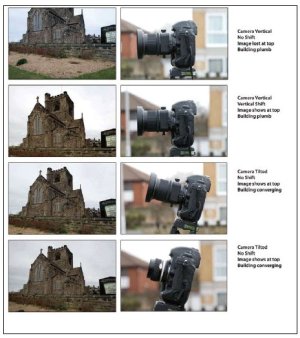articles/Digital/timeschange-page2
The Times They are a changin' - part 2 of 1 2 3
by Mike McNamee Published 01/04/2008

The Nikon D3 arrived in a timely manner and one was ordered within hours of testing the Professional Imagemaker review model (see article in the last issue). Paul's three-lease cycle was due up on his D2x and so it was time to make a decision. After testing the Hasselblad 39Mp camera, Paul decided that the Hasselblad investment was not justified by the improvement from the additional pixels; the costs did not stack up. It was time to make a clean sweep and here is the matrix of equipment changes.
The Walker Titan 5x4 along with 65mm, 90mm,150mm and 180mm Schneiders was sold back to camera maker, Mike Walker. The popularity of 5x4 is still strong enough for Mike to have a waiting list, so the refurbished camera will be moved on to a new home. The Fuji 6x17 GX Panoramic camera was sold to a landscape photographer. The Imacon Scanner is retained. The Hasselblad 503 and SWC bodies are to be sold complete with 38mm, 50mm, 80mm and 150mm lenses and three backs.
The incoming kit includes the new Nikon D3, along with a selection of enses, a VR 303 Panoramic Head, a GPS camera system and a Lowepro Roller 2 to wheel it all about. The 'balance sheet' is shown in the table opposite. The icing on the cake was the arrival of the 24mm shift lens.
The switch-over has thus cost in the region of £1,200. Part of the decision making process was the realisation that waiting longer would have allowed the resale value of the film cameras to drop still further as the market becomes bloated with defunct equipment.

Each pair of pictures shows the disposition of the camera on the right and the resulting image on the left. Below the top image is another composite which shows the effect of tilt in the horizontal plane (termed 'swing'). Note how the sharpness of the stonework is improved in the right hand picture by the application of maximum swing.
PC-E NIKKOR 24mm f/3.5D ED
For the architectural specialist two recent developments have brought the possibilities of digital capture with '35mm' size of DSLRs into the frame. First is the fullsize chip of the new D3 which gives the photographer their true wideangle lenses back and secondly the arrival of Perspective Control Nikkors at 24mm and 85mm focal length.
Paul McMullin received one of the first 24mm lenses to come into the UK and kindly collaborated in the testing. The 24mm lens has an angle of view of 84°, rising to 101° when fully shifted. The shift is available at ±11.5mm and the tilt ranges ±8.5°. The lens contains 13 elements in 10 groups. It has three ED elements, three aspheric and one with the new Nano Crystal Coat. As we will describe later, this is a potent mix of glass!
For our younger readers who may be unfamiliar with rising front cameras, here is how it works. In order to keep verticals in the scene vertical in the image, the back of the camera has to be perfectly upright. This often chops off the top of the scene. Without a shift lens the photographer has to move further away, sacrificing image scale and detail, or use a shorter focal length lens which again sacrifices scale and image detail. Shifting the lens upwards brings the top of the scene back into view and keeps everything plumb, ie nonconverging verticals. This is illustrated in the picture sequence.
Please Note:
There is more than one page for this Article.
You are currently on page 2
- The Times They are a changin' page 1
- The Times They are a changin' page 2
- The Times They are a changin' page 3
1st Published 01/04/2008
last update 09/12/2022 14:59:54
More Digital Articles
There are 29 days to get ready for The Society of Photographers Convention and Trade Show at The Novotel London West, Hammersmith ...
which starts on Wednesday 14th January 2026





